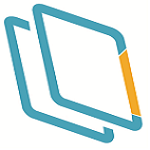Description
A2B Tracking

Tragging Fixed Assets
Comprehensive Overview: A2B Tracking vs Tragging Fixed Assets
A2B Tracking and Tragging Fixed Assets are two companies that offer solutions for managing and tracking assets, but they have different focuses in terms of target markets, features, and differentiating factors.
A) Primary Functions and Target Markets
A2B Tracking
-
Primary Functions:
- A2B Tracking provides enterprise-class solutions for asset tracking and management using barcode and RFID (Radio-Frequency Identification) technologies.
- Their services include UII (Unique Item Identifier) compliance, asset tracking, and inventory management, especially for organizations with requirements for government regulations and standardizations.
-
Target Markets:
- Government and military sectors, where compliance with MIL-STD-130 and other relevant standards is crucial.
- Organizations needing precise and reliable asset tracking for accuracy in reporting and audit readiness.
Tragging Fixed Assets
-
Primary Functions:
- Tragging focuses on delivering RFID-based solutions specifically for asset tracking.
- They provide software and hardware solutions to streamline asset management, automate inventory processes, and enhance operational efficiency.
-
Target Markets:
- Industries such as logistics, retail, manufacturing, education, and healthcare that require detailed asset management and streamlined operations.
- Businesses seeking to implement RFID technology for higher efficiency and lower manual labor in asset tracking.
B) Comparison in Terms of Overall Market Share and User Base
-
A2B Tracking:
- Has a significant presence in sectors needing compliance with strict regulatory standards like the military and government.
- Known for reliability and precision, it occupies a strong niche market where compliance and accuracy are the primary concerns.
- Market share is concentrated in regulated industries rather than general commercial asset tracking.
-
Tragging Fixed Assets:
- Has a broader market appeal due to its applicability across diverse industries.
- The user base may be larger in numbers due to accessibility to various commercial sectors.
- Tragging might enjoy a higher penetration in non-regulated industries where RFID adoption is rapidly increasing, helping businesses in digital transformation.
C) Key Differentiating Factors
-
Technology and Compliance:
- A2B Tracking is heavily focused on compliance features and precise tracking, making it a go-to solution for government and military applications. It integrates easily with standards like MIL-STD-130, making it indispensable for organizations in compliance-sensitive areas.
- Tragging offers more flexibility in the technology used, especially in RFID solutions, making it suitable for a wide range of commercial applications where rapid deployment and adaptability are essential.
-
Market Focus:
- A2B Tracking caters to niche markets that require high levels of accuracy and regulatory adherence. This makes it a specialized tool for sectors with specific compliance needs.
- Tragging caters to a wider scope of industries, providing scalable solutions that can fit both small businesses and large enterprises seeking efficient asset management.
-
Customization and User Experience:
- A2B Tracking's solutions are more tailored towards meeting compliance and detailed reporting, which may require specific customizations based on regulatory needs.
- Tragging offers more off-the-shelf solutions that can be quickly adapted and implemented, catering to businesses looking for immediate improvements in asset tracking without heavy customization.
Overall, while both companies offer robust asset tracking solutions, A2B Tracking is identified with compliance-driven markets, whereas Tragging is attractive to a broader commercial user base with a flexible approach to integrating RFID technology.
Contact Info
Year founded :
Not Available
Not Available
Not Available
Not Available
Not Available

Year founded :
Not Available
Not Available
Not Available
Not Available
Not Available
Feature Similarity Breakdown: A2B Tracking, Tragging Fixed Assets
To provide a detailed feature similarity breakdown for A2B Tracking and other fixed asset tracking solutions, it is important to compare their core features, user interfaces, and any unique offerings. While specific details may vary depending on the latest updates or product revisions, here is a general breakdown based on typical features in asset tracking software:
a) Core Features in Common
-
Asset Tracking: Both A2B Tracking and fixed asset tracking systems typically offer the ability to tag, track, and manage physical assets using barcodes or RFID technology.
-
Inventory Management: These systems often manage the inventory of assets, including asset lifecycle, location, and status updates.
-
Audit Trails: They maintain detailed records of asset movements and changes over time, providing an audit trail for compliance and accountability.
-
Reporting and Analytics: Standard reporting features, including visual dashboards and analytics, allow users to generate insights and summaries of asset data.
-
Compliance Tracking: Support for compliance with industry standards and regulations, such as DOD MIL-STD-130 and IUID for A2B Tracking, is typical in these systems.
b) User Interface Comparison
-
A2B Tracking: Known for its robust and compliance-focused interface, A2B Tracking’s UI is typically tailored for enterprises that require detailed compliance and regulatory adherence, providing extensive tools for managing military and government assets.
-
Fixed Assets Software: The user interfaces of generic fixed asset tracking solutions may vary, with some offering more simplified, user-friendly UIs for ease of use, often with drag-and-drop functionalities and customizable views that cater to businesses of various sizes.
c) Unique Features
-
A2B Tracking:
- IUID Capability: This software is particularly strong in supporting Item Unique Identification (IUID) for military and government applications, which is often not a primary focus of other commercial asset tracking solutions.
- Compliance Modules: Offers comprehensive tools specifically aimed at meeting DOD and other regulatory compliance, which might include modules for managing extensive IUID and RFID data.
-
Other Fixed Asset Solutions:
- Customization Options: Some may offer greater customization options and integrations with other business systems (e.g., ERP systems, accounting software).
- Scalability and Cloud Integration: Focus on cloud-based management and scalable solutions for growing businesses, often with mobile app support for real-time tracking and updates.
The choice between these solutions would depend significantly on the specific needs, such as compliance requirements, integration capabilities, and ease of use preferences of the organization. Industry-specific features may also play a critical role in the decision-making process.
Features
Not Available

Not Available
Best Fit Use Cases: A2B Tracking, Tragging Fixed Assets
A2B Tracking Use Cases:
a) Best Fit for A2B Tracking:
-
Defense and Government Contracts:
- A2B Tracking is particularly suited for defense and government contractors who need to comply with stringent MIL-STD-129 and MIL-STD-130 standards for Item Unique Identification (IUID) and RFID tagging requirements. The platform ensures compliance with these regulations, making it ideal for businesses working on military or government contracts.
-
Logistics and Supply Chain Management:
- Companies involved in complex logistics operations, including those in aerospace, manufacturing, and distribution, can benefit from A2B Tracking's comprehensive asset tracking capabilities. It provides real-time visibility and traceability of assets throughout the supply chain, improving efficiency and accuracy.
-
Large Enterprises with Diverse Asset Portfolios:
- Large enterprises with a vast and varied array of assets across different locations can leverage A2B Tracking’s robust system to manage these efficiently. The software offers features like serialization, barcoding, RFID tracking, and compliance management that cater to complex needs.
-
Compliance-Driven Industries:
- Industries like pharmaceuticals or electronics that require adherence to strict regulatory standards for asset tracking and reporting can find A2B Tracking's compliance features advantageous.
b) Preferred Scenarios for Tragging Fixed Assets:
-
Small to Medium-Sized Businesses (SMBs):
- Tragging Fixed Assets is often more cost-effective and suitable for SMBs that do not require the extensive compliance features of A2B Tracking but still need reliable asset management solutions. It provides essential tracking functionalities without the overhead of unnecessary features for smaller enterprises.
-
Industries with Basic Asset Management Needs:
- Businesses in sectors like education, healthcare, or retail, where the asset tracking requirements are less complex and don't require compliance with strenuous standards, may find Tragging Fixed Assets to be a better fit.
-
Organizations Prioritizing Simplicity and Ease of Use:
- If an organization prioritizes ease of setup, use, and minimal training requirements, Tragging Fixed Assets can be ideal. Its intuitive interface and straightforward functionality are designed for companies that need simplicity and efficiency over advanced features.
d) Catering to Different Industry Verticals or Company Sizes:
-
A2B Tracking:
- A2B Tracking is versatile in catering to large enterprises and specific verticals like defense, aerospace, and other industries requiring compliance with stringent standards. Its scalability allows it to handle a vast number of assets, making it well-suited for large corporations with complex asset management needs spanning multiple locations and jurisdictions.
-
Tragging Fixed Assets:
- This solution is generally better suited for smaller companies or those in verticals with simpler asset management requirements. It focuses on offering straightforward, budget-friendly solutions that fulfill the needs of organizations that do not require extensive compliance management. Its scalability is more limited compared to A2B Tracking, aligning well with companies that manage fewer assets or have less diversity in their asset portfolios.
In summary, A2B Tracking excels in environments requiring compliance and large-scale asset management, while Tragging Fixed Assets serves smaller businesses or those needing simpler, more cost-effective solutions. Each platform has distinct strengths, making them suitable for different business needs and sizes.
Pricing
Pricing Not Available

Pricing Not Available
Metrics History
Metrics History
Comparing undefined across companies
Conclusion & Final Verdict: A2B Tracking vs Tragging Fixed Assets
To provide a comprehensive conclusion and final verdict on A2B Tracking vs. Tragging Fixed Assets, we need to explore several aspects of both products, such as their features, pricing, user interface, customer support, and scalability. Here’s a detailed breakdown:
a) Best Overall Value
Considering all factors, the best overall value between A2B Tracking and Tragging Fixed Assets largely depends on the specific needs of your organization.
-
A2B Tracking is often recognized for its robust compliance features, particularly beneficial for federal contractors and organizations dealing with military assets. It might offer more value to businesses that require rigorous compliance and reporting capabilities.
-
Tragging Fixed Assets, on the other hand, may offer better value for smaller to medium-sized businesses looking for an intuitive interface and affordability. It’s suitable for organizations that need a straightforward asset management solution without the complexity of compliance mandates.
b) Pros and Cons
A2B Tracking:
-
Pros:
- Strong compliance and reporting tools.
- Excellent for military and government asset tracking requirements.
- Advanced RFID and barcode scanning capabilities.
- Robust integration options.
-
Cons:
- Potentially higher costs, especially for smaller organizations.
- Complexity might require more training and a steeper learning curve.
- Might offer more features than necessary for small businesses.
Tragging Fixed Assets:
-
Pros:
- User-friendly interface and ease of use.
- Cost-effective and scalable for small to medium-sized enterprises.
- Essential asset tracking features are readily accessible.
- Quick deployment with minimal setup time.
-
Cons:
- May lack advanced compliance features essential for government contracts.
- Less suitable for organizations with complex tracking needs or large-scale operations.
- Limited integration capabilities compared to A2B Tracking.
c) Specific Recommendations
For users trying to decide between A2B Tracking and Tragging Fixed Assets:
-
If compliance is a priority, particularly for government contracts, A2B Tracking is likely the better choice. It offers the necessary tools to ensure adherence to stringent standards and regulations.
-
If budget and simplicity are key concerns, and the organization doesn’t require extensive compliance features, Tragging Fixed Assets could be the optimal solution. Its cost-effectiveness and simplicity are significant advantages for businesses with straightforward asset tracking needs.
-
For large enterprises or those with complex asset management requirements, A2B Tracking provides the scalability and comprehensive features necessary to manage extensive and intricate asset portfolios.
-
On the other hand, small to medium businesses without complex compliance needs may find Tragging Fixed Assets sufficient and more economically viable.
Final Verdict: The choice between A2B Tracking and Tragging Fixed Assets hinges on organizational needs. A2B Tracking suits organizations needing in-depth compliance and reporting functionalities, while Tragging Fixed Assets caters well to those prioritizing ease of use and affordability. Considerations around company size, budget, and specific asset management requirements will guide the decision effectively.
Add to compare
Add similar companies



